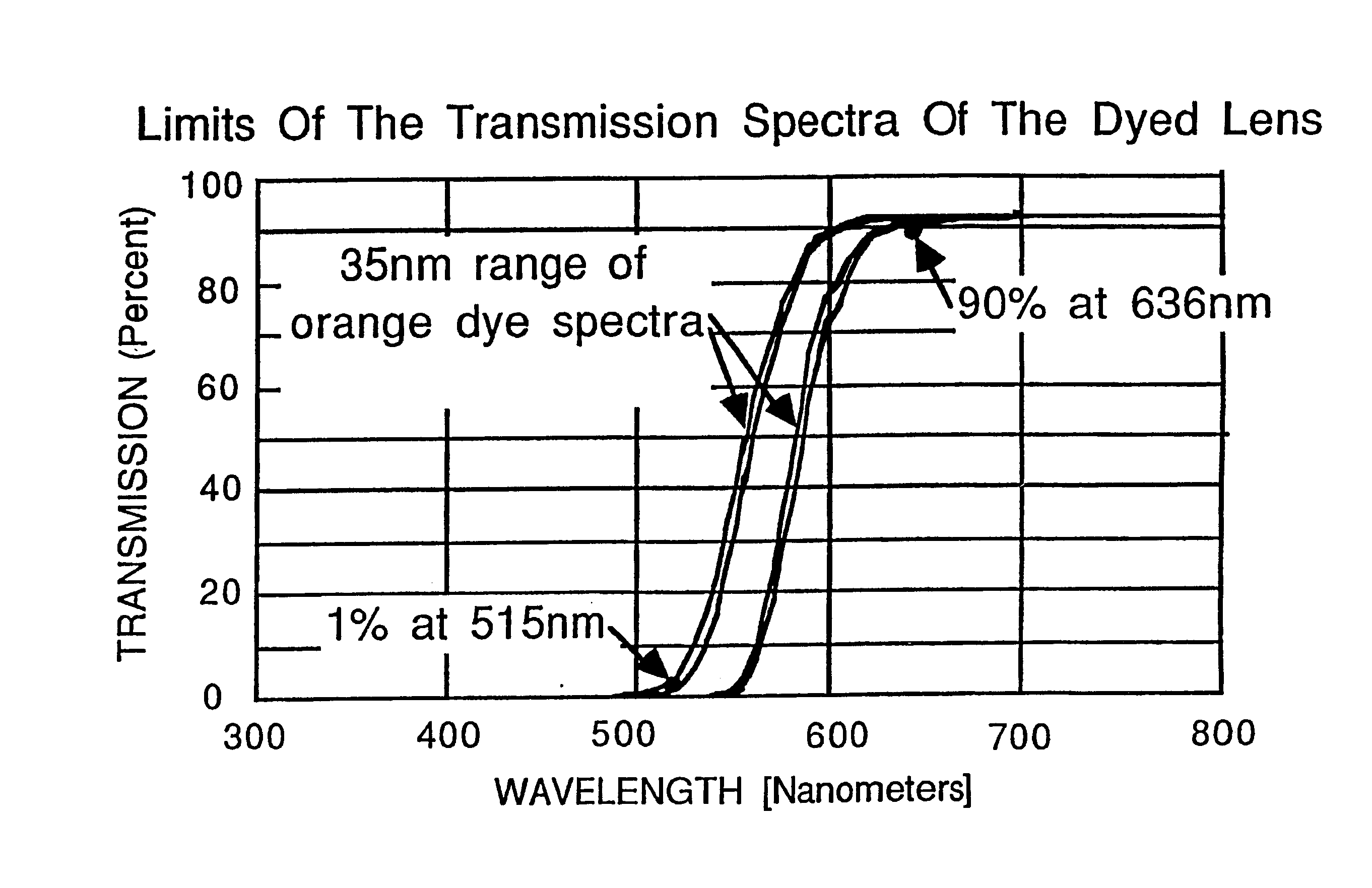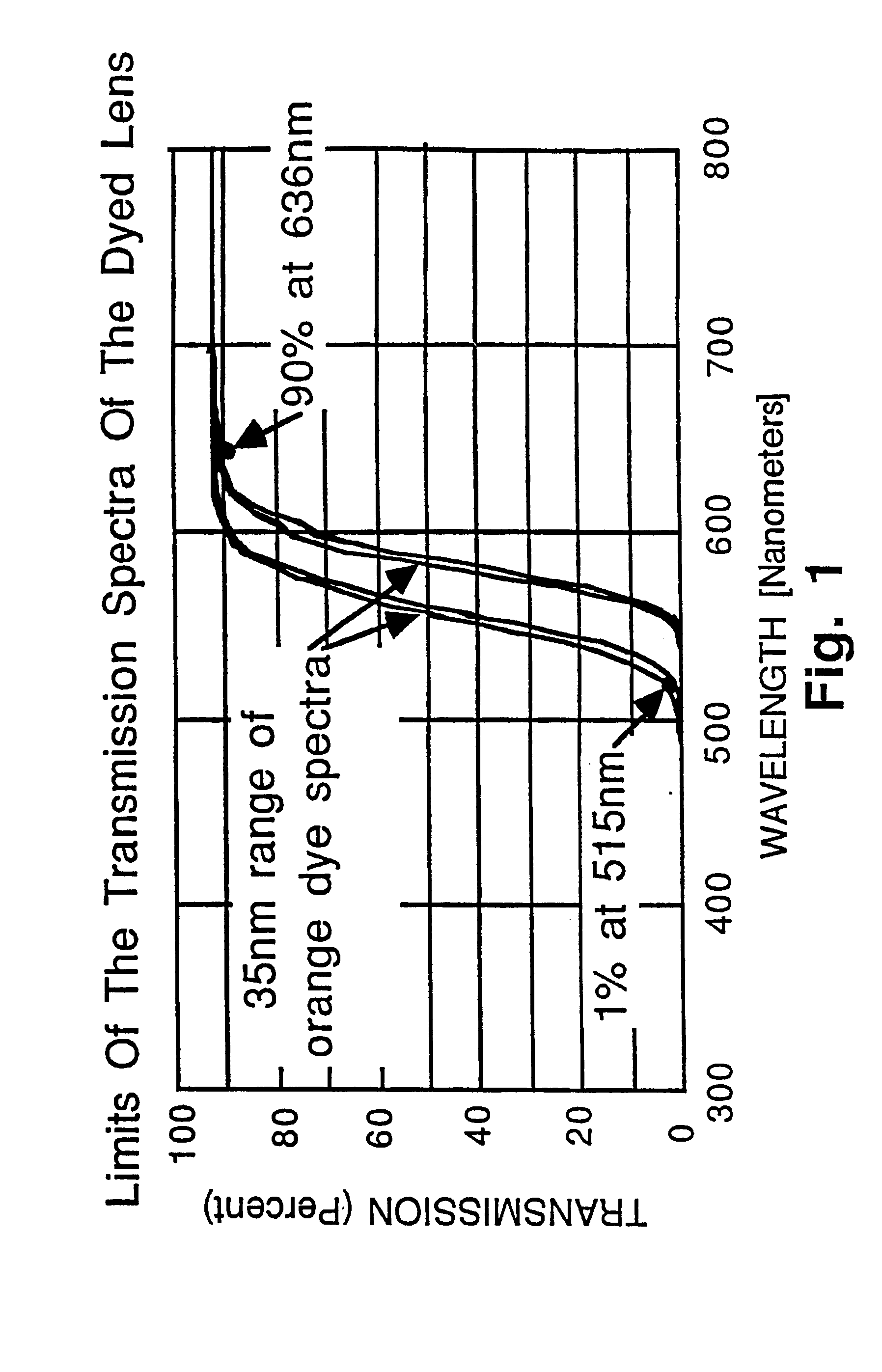Optical lenses with selective transmissivity functions
a technology of optical lenses and functions, applied in the field of lenses, can solve the problems of limited properties of special lenses, harmful wavelengths of sunlight to the eye, night blindness and snow blindness, etc., and achieve the effect of high visual acuity
- Summary
- Abstract
- Description
- Claims
- Application Information
AI Technical Summary
Benefits of technology
Problems solved by technology
Method used
Image
Examples
Embodiment Construction
The best mode for carrying out the inventive lens is presented in terms of a preferred embodiment that uses a plastic lens. In the disclosure that follows, various optical terms are used to describe the lens. To facilitate the understanding of the invention, these terms are initially defined.
LENS
an opthalmic lens that provides refractive correction or a lens that provides no refractive correction also known as a "plano lens".
light having the spectral characteristics of midday sunlight that has penetrated the earth's atmosphere to an elevation between sea level and 10,000 feet above sea level.
VISIBLE SUNLIGHT
sunlight with wavelengths between 400 nm and 780 nm.
PHOTONS DELETERIOUS TO THE EYES
violet and blue light photons which are the principal cause of senile macular degeneration (also known as "Blue Light Hazard⇄), and the ultraviolet radiation photons which are the principal cause of cateractogenisis.
HIGH VISUAL ACUITY
an improved visual acuity achieved by blocking the follow...
PUM
 Login to View More
Login to View More Abstract
Description
Claims
Application Information
 Login to View More
Login to View More - R&D
- Intellectual Property
- Life Sciences
- Materials
- Tech Scout
- Unparalleled Data Quality
- Higher Quality Content
- 60% Fewer Hallucinations
Browse by: Latest US Patents, China's latest patents, Technical Efficacy Thesaurus, Application Domain, Technology Topic, Popular Technical Reports.
© 2025 PatSnap. All rights reserved.Legal|Privacy policy|Modern Slavery Act Transparency Statement|Sitemap|About US| Contact US: help@patsnap.com


